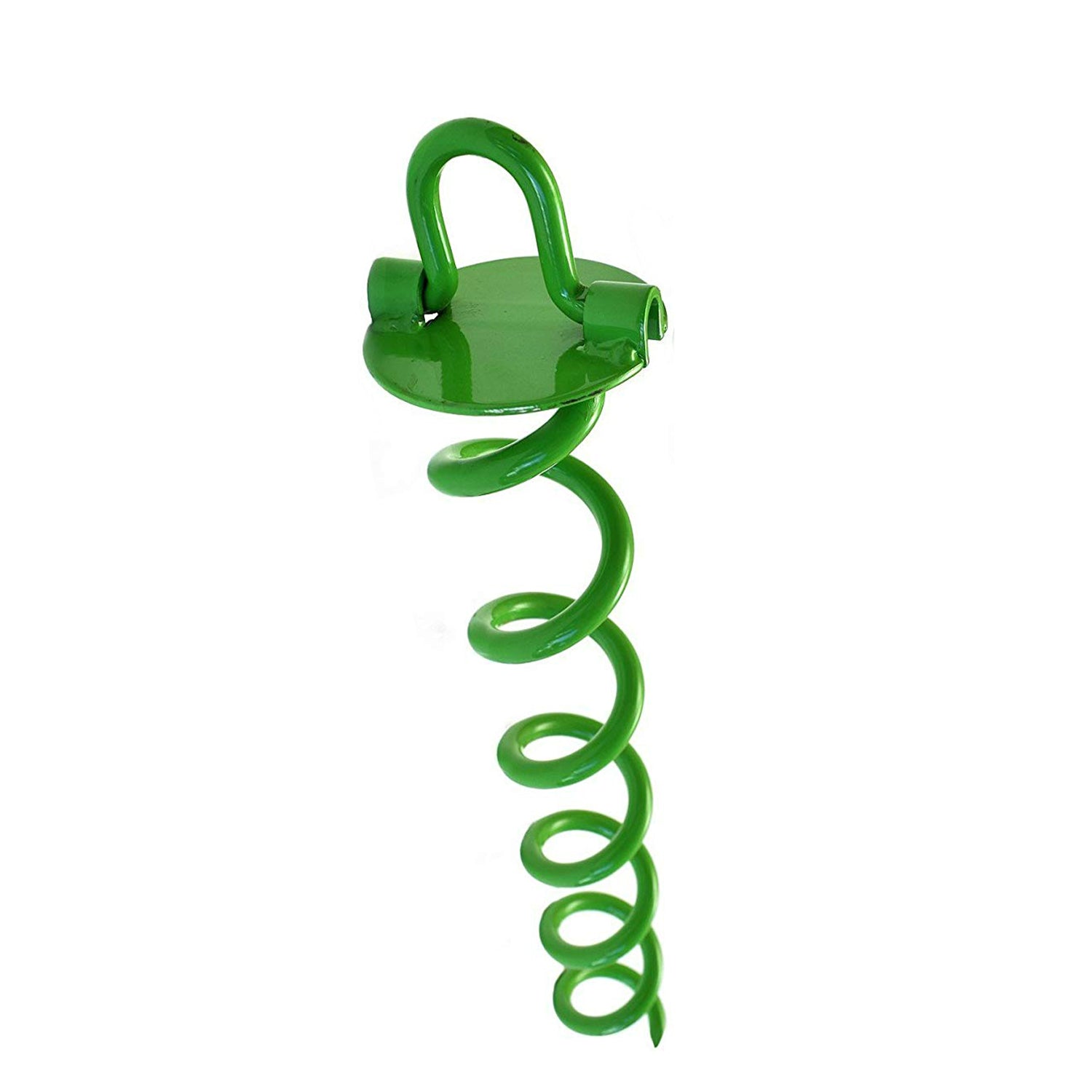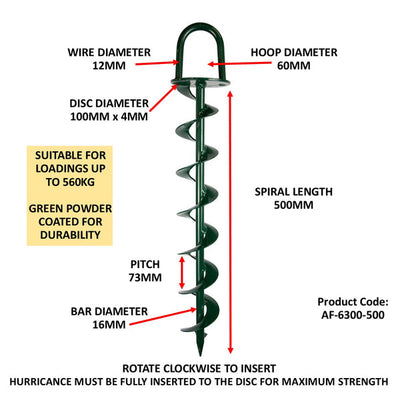How to Choose the Best Ground Anchor for Outdoor Use
Wiki Article
Explore the Different Sorts Of Ground Anchor for Your Following Job
From auger anchors, which excel in varied dirt conditions, to stake anchors created for short-term setups, the alternatives are countless. Furthermore, concrete and screw anchors present distinct benefits in details circumstances, while deadman anchors are customized for applications requiring resistance to lateral pressures.
Auger Anchors
Auger supports are a popular choice in numerous building and construction and landscaping tasks as a result of their distinct style and efficient anchoring capabilities. These supports include a helical screw-like shaft that is driven into the ground, allowing for a secure and safe hold. The spiral style promotes very easy setup and maximizes resistance against side forces, making auger anchors particularly efficient in applications such as secure fencing, temporary structures, and erosion control.The setup process of auger supports is reasonably uncomplicated. Auger anchors can be easily removed and reused, which includes to their cost-effectiveness and sustainability.
One of the substantial benefits of auger anchors is their capacity to disperse tons equally across the surrounding soil, minimizing the risk of soil disturbance and minimizing ecological impact. Additionally, they are less prone to loosening or heaving over time contrasted to standard anchoring methods. Auger anchors are an outstanding selection for jobs calling for resilient and dependable anchoring options.

Stake Anchors
When it concerns safeguarding frameworks in a variety of exterior applications, stake anchors use a simple and dependable option. These anchors are typically constructed from durable materials such as steel or light weight aluminum, developed to hold up against environmental anxieties while offering optimal security. Their easy style enables for quick installment, making them an excellent option for temporary or long-term anchoring needs.Risk supports are particularly useful in protecting tents, covers, and various other lightweight frameworks against wind and weather. They work by being driven right into the ground at an angle, creating a solid hold that withstands pull-out pressures - Ground Anchor. The efficiency of risk anchors relies on a number of variables, consisting of dirt type, wetness content, and the angle of installment
For included security, numerous stake anchors come with add-on points for straps or ropes, permitting for stress modifications as required. In applications such as landscaping or construction, they can properly support equipment or structures on uneven terrain. On the whole, stake supports offer a functional and cost-efficient remedy for safeguarding different exterior installments, making them a recommended choice for specialists and do it yourself fanatics alike.
Concrete Anchors
Concrete supports give a durable option for protecting frameworks to concrete surface areas, making certain stability and security in different applications. These anchors are essential for jobs ranging from residential buildings to massive commercial setups. They come in various types, including growth anchors, glue anchors, and undercut supports, each made for certain tons needs and environmental problems.
Sticky anchors make use of high-strength epoxy or resin to bond the support to the concrete, using premium load-bearing capabilities, especially in split concrete situations. Undercut anchors create an unique shape within the concrete, giving extraordinary holding power, specifically in applications where tensile lots are prevalent.
Choosing the ideal concrete support includes thinking about variables such as the weight of the lots, the condition of the concrete, and environmental conditions. Appropriate installation strategies are critical to make sure optimal efficiency and reliability. When executed correctly, concrete anchors considerably improve the structural stability of numerous projects, making them important in modern-day construction methods. Comprehending the specific needs of your project will aid in selecting the ideal kind of concrete anchor for the task.
Screw Anchors

Screw supports are a versatile attaching solution that can be efficiently employed in a selection of applications where standard concrete anchors might not be enough. These supports contain a helical layout that enables them to be quickly driven into the ground, making them suitable for use in soil and other substratums. Their special structure offers outstanding holding power and resistance you could try these out to pull-out pressures, making them appropriate for various projects, from landscaping to architectural support.
Among the key benefits of screw anchors is their simplicity of installment. They require very little devices and can usually be installed without the need for excavation, which conserves both time and labor expenses. In addition, screw supports can be eliminated and reused, supplying a lasting service for short-term applications.
Screw anchors are especially valuable in locations where dirt problems are challenging, such as sandy or loose soils. Their capacity to be set up at varying depths permits for customization based upon certain task demands. On the more info here whole, screw anchors supply a effective and trustworthy securing method, making them a superb choice for contractors and designers seeking efficient options for their projects.
Deadman Anchors
Deadman supports act as a robust option for maintaining frameworks in challenging conditions, specifically where traditional securing techniques may fall short. These anchors contain huge, hefty items hidden underground, which create resistance versus side forces. The design typically includes a straight element, such as a block of concrete or a metal plate, hidden in the dirt, to which straps or cables are connected.The effectiveness of deadman anchors hinges on their ability to disperse loads over a bigger area, reducing the threat of failure in unsteady dirt problems. They are particularly advantageous in applications such as retaining wall surfaces, short-term frameworks, and incline stablizing, where dirt motion can compromise the integrity of the framework.
Setup of deadman supports requires mindful planning to ensure they are put at the appropriate deepness and alignment, optimizing their load-bearing ability. While they might require more labor and product than light-weight supports, their integrity in damaging problems makes them very useful for long-term projects. Deadman anchors are functional and can be adjusted to various applications, making them a best choice for designers facing unique challenges in their jobs.
Final Thought
In recap, choosing the ideal kind of ground support find out here now is important for making sure stability and safety and security in numerous jobs. Auger anchors master varied soil conditions, while risk supports fit short-lived applications. For concrete surfaces, growth and sticky anchors supply trustworthy options, and screw supports supply adaptability in tough surfaces. Deadman supports are specifically effective in withstanding lateral forces for maintaining walls. Careful consideration of these options will enhance job results and architectural integrity.In addition, concrete and screw supports present distinct benefits in particular situations, while deadman supports are tailored for applications needing resistance to side forces - Ground Anchor.Auger anchors are a prominent selection in numerous building and construction and landscape design tasks due to their unique layout and effective securing capacities. They come in various kinds, including development anchors, adhesive supports, and undercut supports, each designed for particular lots demands and environmental problems
Sticky supports use high-strength epoxy or resin to bond the anchor to the concrete, supplying superior load-bearing capacities, especially in split concrete circumstances. Overall, screw anchors offer a trusted and effective securing technique, making them an excellent selection for designers and professionals seeking effective remedies for their tasks.
Report this wiki page